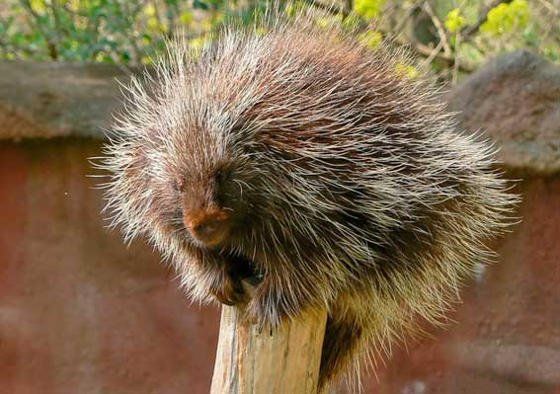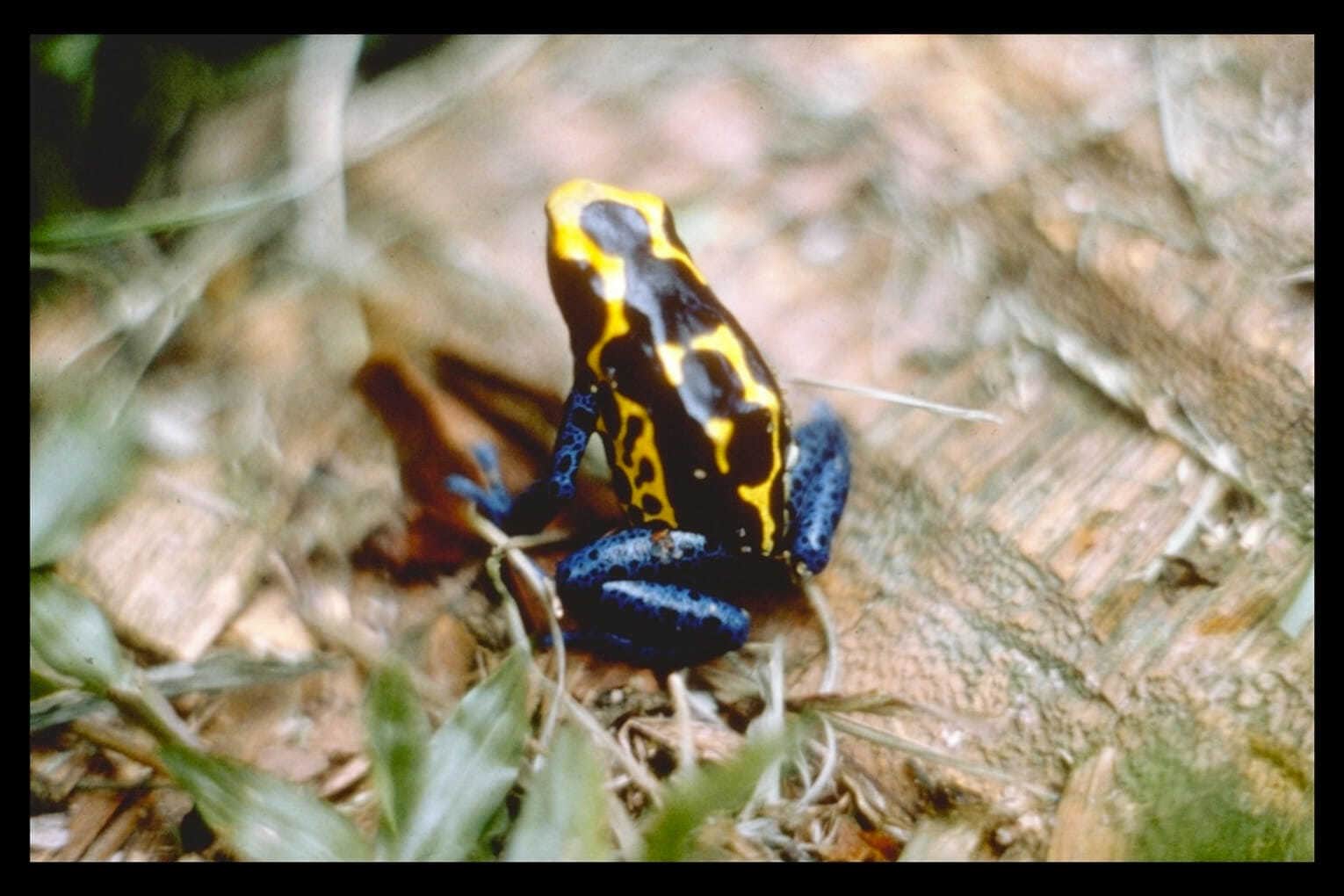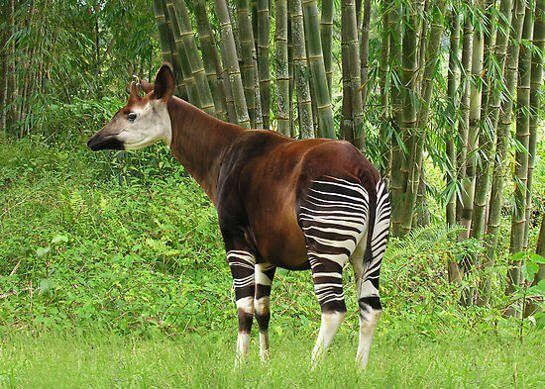Plants and animals have adapted to its bathing conditions?
How have the leaves adapted?
Throughout life, the leaves of some tropical plants change shape. In young trees, while they are still covered by the crowns of the trees of the upper tier, the leaves are wide and soft. They are adapted to capture the slightest rays of light breaking through the upper canopy. They are yellowish or reddish in color. So they try to save themselves from being devoured by animals. Red or yellow color may seem inedible to them.
When the tree grows to the first tier, then its leaves decrease in size and seem to be covered with wax. Now there is a lot of light and the leaves have a different task. Water should drain completely from them, without attracting small animals.
The leaves of some plants can regulate the flow of sunlight. In order not to overheat in bright light, they stand parallel to the sun's rays. When the sun is shading the cloud, the leaves turn horizontally to take more of the sun's energy for photosynthesis.
Pollination of flowers
For pollination, flowers must attract insects, birds, or bats. They attract with their bright color, smell and delicious nectar. To attract their pollinators, even the plants of the upper tier decorate themselves with beautiful flowers. Moreover, at the time of flowering, they even shed some of their leaves so that their flowers stand out more noticeably.
Orchids produce nectar to attract insects, from which the bees get drunk. They are forced to crawl over the flower, pollinating it. Other types of orchids simply slam shut, dusting the insect with pollen.
But it is not enough, to pollinate the flowers, it is also necessary to spread the seeds. Seeds are dispersed by animals. To attract them, plants offer them delicious fruits with seeds hidden inside. The animal eats the fruit, and the seed comes out of it with excrement, quite capable of germinating.
Sometimes plants reproduce with the help of only one kind of animal. So the American walnut breeds only with the help of a large agouti rodent. Although agoutis eat nuts completely, they bury some of them in the ground. Our proteins also make such a reserve. Forgotten seeds germinate.
Animal food in the tropics
Animals in the midst of an abundance of food food is not enough. Plants have learned to defend themselves with thorns, poisons, bitter substances. Animals over the years of evolution have found their own way of adapting to living in tropical forests. They live in a certain place and lead the life that ensures its survival.
It happens that a predator eats beetles of a certain species. He learned to catch bugs quickly, spending a minimum of time and effort on hunting. The predator and its prey adapted to each other. If there is no beetle, then the predator that eats them will die out.
Adaptation of animals to living in the subtropics

In the tropics, food grows and flutters all year round, but it's not enough. All conditions are created for invertebrates in the forest, and they grow to large sizes. These are centipedes, snails and stick insects. Mammals are small. There are few herbivores in the forest. There is not enough food for them. It means that there are few predators feeding them. There are no animals here that have long horns. They are difficult to navigate in the tropics. Mammals move quietly. Thus, they are saved from overheating.
Lives well in the tropics dexterous monkeys. They quickly move through the forest, looking for places where a lot of fruit has grown. The tail of the monkey replaces their fifth limb. The anteater also has a grasping tail, and the porcupine has a needle-haired. Animals that couldn't climb well learned to fly well. They plan easily. They have a leathery membrane that connects the front and hind legs.
Union of a tree with ants
Trees grow in the tropics with hollow branches. Ants live in the cavity of the branches. They protect their tree from herbivores. The ants give the tree enough light. They eat the leaves of vines in nearby trees that block the light for their host tree. Ants eat all the leaves that do not look like the leaves of their native tree. They even remove all organic matter from its crown. The tree is well-groomed, like a gardener. For this, insects have dry housing and safety.
How have frogs adapted?

High air humidity allows toads and frogs to live far from the river. They live well, living in the upper tiers of the forest. For the pond, the frogs chose hollow trees. They cover it with resin from the inside and wait for it to fill with rainwater. The frog then lays eggs there. Drevolozov, arranges for his offspring pits in the damp earth.
The male remains to guard the clutch. Then it transfers the tadpoles to the formed reservoir, formed between the leaves of the bromeliad. Some frogs lay their eggs in a foam nest. They build their nest on branches hanging over the river. Hatched tadpoles immediately fall into the river. Other frogs lay their eggs in moist soil. They emerge from there as young adults.
Animal disguise

Animals in the forest try to become invisible to their predators. Under the canopy of the forest there is a constant play of light and shadow. Such spotty skins in okapi, antelopes, bongos. Spotting blurs the contours of their body and makes them hard to see. Very well you can disguise yourself as leaves. If the animal looks like a leaf and does not move, then it is difficult to see it. Therefore, many insects and frogs are green or brown. Plus, they don't move much. And stick insects disguise themselves as a twig.
Many animals, on the contrary, have bright colors. They imitate the color of poisonous animals with poisonous skin. Predators do not attack harmless animals. They assume they are poisonous. Some arthropods look like an ant. The combination of black and yellow is considered a warning color by predators. The wings of butterflies and grasshoppers are decorated with bright, eye-like spots.
mating season in animals
Animals need to attract a partner to themselves and not attract the dangerous attention of predators. To do this, they use signals using sound and light. Painted birds have the ability to reflect the light falling on them. Fireflies have adapted to emit flashing lights. They are located at the end of their abdomen. The fireflies flash and go out at the same time, filling the air with a mysterious light. Some animals make loud, brief calls to attract the attention of the opposite sex. They are afraid that predators could not find them by their voice. And the frogs are not afraid to sing in chorus.
Unfortunately, tropical forests are getting smaller. They are destroyed mainly because of valuable timber. Deserts are formed in place of tropical forests. People want to save the rainforests. The movement to protect forests began in Germany, Colombia, Sweden. After all, the conservation of tropical forests is in the interests of all mankind.
